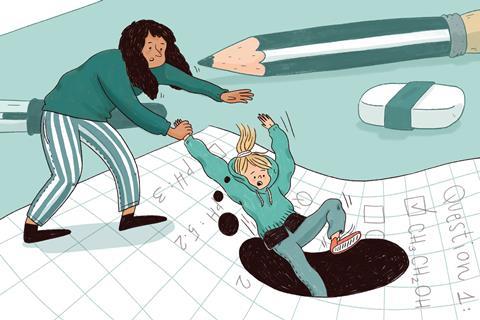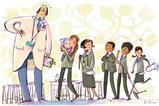Andy Chandler-Grevatt explains how you can use your subject knowledge to avoid learning errors

Among its recommendations to improve secondary science, the Education Endowment Foundation suggests teachers boost their knowledge of and challenging of student’s misconceptions. Here, I want to add mistakes and errors.
In his research into mistakes and learning deficits, James McMillan lists a number of reasons why learners make mistakes, which range from carelessness to deep-rooted misconceptions. I have also used Keith Taber’s four reasons for mistakes (lack of knowledge, a missing connection, a misunderstanding, or a misconception) to help plan interventions.
Mistake, error or misconception?
Mistake
Caused by carelessness, lack of concentration or just forgetting something. Usually the learner will respond: ‘Of course. I knew that!’
Error
Often caused by a mistake that is carried on, a partial understanding, something missing (like knowledge or a connection) or a misunderstanding. Errors can usually be fixed easily through intervention.
Misconception
A deeply held idea that is part of the learner’s schema — something that makes sense (to them) — that will take more to correct than just being told it is wrong.
Boost your assessment literacy
A teacher with good assessment literacy of mistakes, errors and misconceptions will have knowledge of the common problems for each part of the curriculum. They will be able to recognise when a learner makes a mistake, and challenge it; predict common issues and plan to pre-empt them; and continually reflect and improve on their knowledge of learner mistakes.
Once you have a mental map of a concept, you can start to add common mistakes, errors and misconceptions: I imagine these as potholes or trip hazards. Taking the displacement reaction between copper sulfate and magnesium for 11–14 year olds as an example; the common mistakes, errors and misconceptions include:
- the perception that the magnesium rusts (oxidises) when it changes colour.
- thinking that copper sulfate ‘disappears’.
- describing a colourless liquid as ‘white’.
- word equation errors, like misspelling of sulfate.
- misconceptions associated with conservation of mass.
Strategies for improvement
There are a number of ways you can boost your assessment literacy:
- Experience. The more you teach, the more you will recognise the common mistakes learners make. Additionally, there are always learners who come up with a new error, mistake or interpretation of something, and here teachers can intervene.
- Talk to other teachers. As professionals, teachers can pool their experience and share anecdotes of learner mistakes, errors and misconceptions through face-to-face conversations or on social media. Identifying the common mistakes, errors and misconceptions for a topic as described above helps to focus the conversation and share good practice.
- Internet research. Searching online for ‘misconceptions + [topic]’ will give you a range of sources, such as teacher blogs, research digests and teacher websites to find out common issues with learning particular chemistry topics and concepts.
- Read the research literature. Google Scholar or a research database will reveal the most up-to-date research studies and reviews from around the world. Not all resources are free to access, but often a version of a paper is available online. Be aware that not all misconceptions are universal, some are culturally linked.
The next article in the series will look at your interpretation and intervention skills.

6 ways to develop your assessment skills
- 1
- 2
- 3
 Currently reading
Currently readingMistakes, errors and misconceptions
- 4
- 5
- 6
- 7



















No comments yet